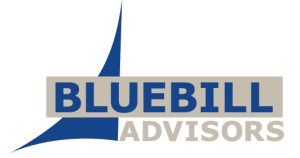Leading Edge Design & Systems (LEDS) announces the newest addition to its Media Archive System (MAS) product suite. The MAS RSS Module gives companies the ability to search, organize and publish their managed content for worldwide syndication. Content that is selected is published to an RSS feed that allows an existing service to distribute the desired content to subscribing Web sites and news services. MAS’s security model allows users to configure which data elements will be syndicated as well as restrict other chosen content and metadata from syndication. MAS RSS will also support Media RSS. MAS RSS’ dynamic infrastructure allows a user to publish an asset to any number of RSS feeds, while also allowing multiple users the ability to distribute content simultaneously to a single channel. http://www.media-archive.com/
Page 472 of 935
Adobe Systems Incorporated announced results of its collaboration with the International Press Telecommunications Council (IPTC) and IDEAlliance with development of a new public specification, IPTC Core Schema for XMP. Exposed through Adobe Creative Suite software, “custom panels” are now available at www.iptc.org, giving photographers and news services immediate access and compliance with a standard that aims to streamline data capture for images used in news outlets. Additionally, Adobe announced that it is working with the AdsML Consortium (Advertising Mark-up Language) and IDEAlliance to implement advertising standards using XMP within advertising workflows. Software developers and system integrators can build support for Adobe XMP into their products via the XMP software development kit, available, free-of-charge, under Open Source License from Adobe. The SDK and additional information about Adobe XMP is available at http://www.adobe.com/xmp
Mondosoft announced the availability of MondoSearch Enterprise. Designed as a low-cost packaged solution to support sites with large numbers of documents and visitors, MondoSearch Enterprise searches and indexes millions of pages while providing capability to align search activity with organizational goals. In addition to enhanced crawl speed, MondoSearch Enterprise features comprehensive re-design for enterprise-class search database and memory-handling to boost search performance. Search performance is also improved through multithreaded connection pooling, reducing server load on both search and content servers. The MondoSearch Enterprise algorithm optimizes large volumes of data for indexing and rapid retrieval. MondoSearch Enterprise is easily integrated into an organization’s IT infrastructure through Microsoft .NET and Web services. www.mondosoft.com
The impact of the Internet on most things personal and professional could be the life’s work of many a sociologist. How we shop, play games, read newspapers and books, and even how we fall in love doesn’t escape redefinition and change. From my perspective, its how we communicate that’s one of the more interesting topics. Safe to say that 10, perhaps even 5 years ago, stating that “everyone’s a publisher” would be quizzical. Now, evidence abounds.
In terms of “social” publishing, blogs and wikis certainly top the list of examples. These days however, those who chat, shop or place a classified ad in a newspaper can also be called a social publisher. And that’s a lot of people.
Granted, the usability of online forms for these types of tasks is usually exceptional enough to hide this fact. But the underlying result immediately publishes opinions, product reviews, and ads to the broadest communication vehicle available today. Even better, the tools are intuitive, fast, cheap, in some cases, free.
In terms of “corporate” publishing, the once contained group of professionals who publish to the Internet is no more. Formalized content technologies allow personnel across most, if not all business units to redefine information creation and delivery — toward the goal of eradicating Web publishing bottlenecks.
The tools in this arena, a.k.a content management systems and according to IDC, “dynamic enterprise publishing products”, certainly don’t boast the same reputation as those for social publishing. In fact, evaluation criteria such as usability, speed and cost often contradicts the notion of “intuitive, fast, and cheap.”
Still, the content technologies software market continues to redefine corporate publishing and support the fact that indeed, “everyone’s a publisher.” And every so often, there’s a real grassroots example of the ever-expanding definition of corporate publishers who create and deliver Web content on a daily basis. From my perspective, Macromedia provides the most recent example.
Since introducing Contribute in December of 2002 for a mere $99, Macromedia has enjoyed consistently growing sales for the past 2 ½ years for this desktop Web content and creation tool. In fact, the company has shipped over 360,000+ seats in less than three years based on the mantra “Web Publishing for Everyone.”
According to the company, users from its business and consumer markets are responsible for the uptake, bolstering a 165% and 258% year-on-year revenue growth respectively. Christening its Web Publishing System in July 2004 with a similar mantra, Macromedia now boasts 250 enterprise customers according to its latest product update release. Both products are included in the company-defined “Information Convenience” category.
Certainly, reputation and marketing have helped Macromedia establish a formidable presence in the corporate publishing arena. A savvy partnership with eBay will surely make a mark in the social publishing arena by introducing Contribute to thousands of consumers.
It’s my opinion, however, that Macromedia’s growth numbers can also be attributed to the fact that everyone is, or at least wants to be, a publisher. And the Internet makes it possible.
Example: in the enterprise, the definition of “everyone” has morphed from the traditional publisher roles such as Webmaster or technical writer into the evolving responsibilities of business unit representatives across a wide spectrum. Borrowing from Field of Dreams, it’s pretty clear that “if you build it, they will come.” Yes, of course it depends how and what you build, not to mention how much it costs! The point is however, that the corporate publishing audience is ready and waiting.
Hummingbird Ltd. unveiled Hummingbird Enterprise Client for Microsoft Outlook. The new Client provides an interactive, business-based view of the entire suite of Hummingbird Enterprise functionality from within Microsoft Outlook. Building on the concepts of Hummingbird’s document management client for Microsoft Outlook, Hummingbird Enterprise Client for Microsoft Outlook allows knowledge workers to interact with all their business content, applications, and processes without having to leave the Outlook client interface. A corporate banker will work with a deal management view of business content, manage an engagement, and collaborate with colleagues on complex, linked company valuation spreadsheets by sharing content in a secure collaborative deal room. A government employee will interact with all incoming and outgoing correspondence including e-mail, fax and mail through a correspondence management view. And a senior partner of a law firm will organize and view all the pleadings and correspondence related to a client matter, and also instantly generate a report with the most up-to-date information on billable hours – all from within Outlook. At the core of the new Client is a Business Solution Framework, encompassing business logic, vertical specific taxonomies, and role-based presentation rules. Leveraging the Business Solution Framework and the supplied vertical templates, organizations will be able to tailor Hummingbird Enterprise to fit their business model. Hummingbird Enterprise Client for Microsoft Outlook will be an interface option for Hummingbird Enterprise 2005, which is expected to be generally available this summer. www.hummingbird.com
ACIS Consulting Inc, a Canadian reseller and systems integrator of search solutions from Fast Search & Transfer (FAST), announced the release of RapidAnswer, a partner-designed and developed Search Derivative Application (SDA) for Self Service. RapidAnswer provides Customer Support Representatives (CSRs) with a unified point of access to all relevant product and customer-related information that may be scattered across various disparate websites, knowledge bases, document repositories, databases and CRM applications. The RapidAnswer solution leverages FAST ESP capabilities in natural language processing, rank tuning and relevancy modeling to deliver answers to customer questions. It enables call center managers to continually monitor and identify the most frequently asked questions that generate high volumes of customer support calls and to develop a knowledge base of short and concise answers. RapidAnswer is used to provide website visitors with a dynamic self service environment that quickly captures their intent and directs them to the correct and most relevant response. In addition, RapidAnswer continually tracks customer satisfaction feedback on presented questions and answers and identifies those topics that are leading to customer support calls and customer dissatisfaction. www.acisconsulting.com, www.fastsearch.com
Verity Inc. announced that Stellar Technologies, Inc. has integrated the Verity KeyView Filter Software Development Kit (SDK) into its new high speed attachment/document management module of the Stellar E-Mail Manager. Stellar Technologies is an provider of employee Internet management and security solutions. The Stellar E-Mail Manager is a module of its newly-released Stellar Internet GEM software suite that monitor, archive, block and provide real-time reporting for e-mail, instant messaging and Web browsing. The Stellar E-Mail Manager module monitors and blocks attachments to e-mails based on the business rules and policies of a global enterprise. The Verity KeyView Filter SDK allows the E-Mail Manager to extract text and metadata from a wide variety of documents on numerous platforms and can recognize over three hundred document types (.PDF, .DOC, .XLS, .ZIP, etc.), allowing users to effectively manage, evaluate and take action on high-value content. Stellar has plans to expand the use of the Verity KeyView Filter technology across its entire Stellar Internet GEM suite, applying its capabilities to the Stellar Instant Message Manager and Stellar Web Manager. In the future, the company expects to offer more managers, such as peer-to-peer, document library and VoIP data to extend consistent policy management to all data forms moving within, to and from an organization. www.verity.com
DataPower announced the availability of fully streaming XML Processing in its DataPower XA35 XML Accelerator. Streaming processing allows an XML engine to begin producing output before the entire input has been parsed and requires only a constant amount of memory, independent of XML document size. Previously, streaming processing was only possible using low-level custom programming or special-purpose languages. DataPower’s approach allows XML developers to continue using familiar XPath/XSLT standards, while seemlessly lowering latency and enabling XML documents of unlimited size to be processed. Some XML processing operations are not streamable by their very nature. For example, an XSLT transformation that reverses the order of elements in a file must necessarily buffer all of the input and wait for the last element before it can produce any output. This has also limited the development of general purpose streaming for XML processing, because of concerns that any solution would be unable to support intrinsically non-streamable operations. In a further complication, it is often difficult for a developer to determine whether a particular set of XML processing operations can be streamed, and to know how later changes may affect streamability. DataPower’s compiler technology automatically determines which operations are streamable and processes them in a fully streaming fashion. With DataPower XG4, the user is not required to learn new languages or determine which processing is streamable, and the engine allows for operations in XSLT and XPath. www.DataPower.com

